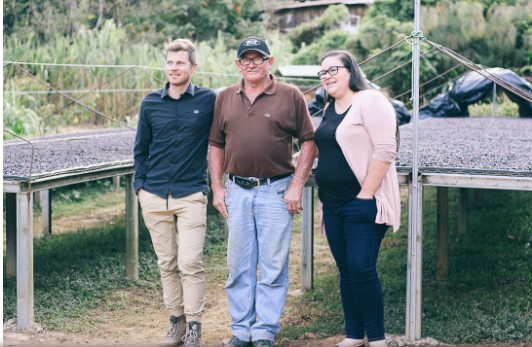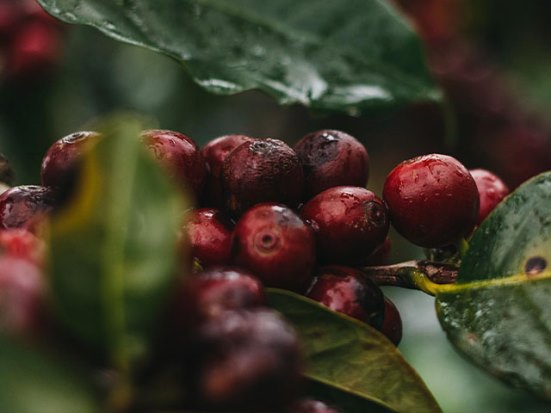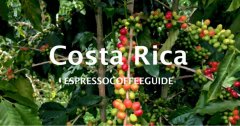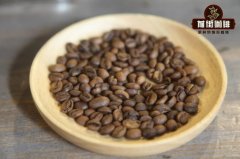Brief introduction of small Candle Manor in Costa Rica how to make the excellent characteristics of Costa Rican rose summer coffee beans
In front of the Costa Rican Coffee Candle Manor, the washing rose summer has always been the white moonlight of rose coffee lovers, the price is not high and has a very excellent flavor: very strong aromas of white flowers and citrus, strong lemon acidity. The sweetness of honey and the sense of tea in the end make it a good bean.
Qianjie is here to introduce the Costa Rican Candle Manor.

La Candelilla Estate is a private company owned by seven brothers / brothers (Ricardo Hernandez, Didier Sanchez, Mario Sanchez, Pablo Sanchez, Hugo Naranjo, Mario Ren é Solis and Enrique Rivera). They all own three to five small farms and grind coffee in La Candelilla Mill. The Hernandez family has cultivated the land of Tarraz ú for five generations and has produced coffee in the same area for more than 50 years. Before establishing La Candelilla, each sibling managed his or her own land and sent their coffee to a co-managed wet mill for processing.
After years of planning, these families pooled their resources and built La Candelilla Estate & Micro Mill. It was pioneered by Costa Rica and laid the foundation for many small producers to follow suit. The explosion of the miniature mill has a lot to do with the complexity of the processing in Costa Rica. La Candelilla Estate is known as one of the earliest micro-mills in Costa Rica in the 2000s and is famous for producing high-quality washed, natural and honey-processed coffee. Different varieties were planted and tested on the farm, including Caturra, Catuai, Typica, Geisha and SL28. Candelilla was also one of the first farms in Costa Rica to use African beds for the drying process. In addition, they donate money to schools in the area every year to comply with the practical certification requirements of their cafes.
The estate now produces 1000 bags of coffee a year and is highly regarded as one of the best coffee producers in the country. Their processing and planting methods have always been forward-looking, and now many batches of geisha are produced every year. The family is one of the few producers in Costa Rica that still use traditional fermentation, but they have built a huge lagoon system that uses native plants to purify water and then return it to the river.
Didier, the owner of Finca Palmilera, won second place in the 2013 Cup of Excellence for his geisha.

What I bought in front of the street is the rose summer boutique coffee from Xiao Candle Manor. The processing method of washing is that this bean is cleaner and fresh.
Qianjie suggested cooking parameters: 15g powder at 1:15, the temperature of powder to water is 90 degrees, and the extraction time is 2 minutes.
The first stage is filled with 30 grams of water and steamed for 30 seconds.
The second stage is filled with water to 125 grams.
The third section, which is slightly larger, takes about 2 minutes to inject water to 225 grams.
Important Notice :
前街咖啡 FrontStreet Coffee has moved to new addredd:
FrontStreet Coffee Address: 315,Donghua East Road,GuangZhou
Tel:020 38364473
- Prev

Costa Rican Mozart Coffee H1 beans History Story hand-brewed Mozart Coffee
Costa Rican coffee has always been a favorite of guests on the front street. The musician series is even better, and the Mozart coffee variety from Tara Sukanette Manor is H 1. So how on earth did the H1 coffee bean come from? According to the world coffee research, H1 coffee from Central America has very high yield and good quality potential. It is very suitable for agriculture and forestry. H1 is short and small.
- Next

Introduction of Coffee Bean species in Candle Manor, Costa Rica characteristics of hybrid coffee beans of Kaddura and Kaduai
In front of the street, there is a Costa Rican coffee from Rose Summer Coffee from small Candle Manor. About the story about small Candle Manor, you can look for our previous article. Although there is only rosy summer coffee from Candle Manor in front of the street, there are actually other varieties of coffee in Candle Manor. In front of the street, let's take a look at the other kinds of coffee beans in Candle Manor. Caturra coffee variety from Sao Paulo, Brazil
Related
- Detailed explanation of Jadeite planting Land in Panamanian Jadeite Manor introduction to the grading system of Jadeite competitive bidding, Red bid, Green bid and Rose Summer
- Story of Coffee planting in Brenka region of Costa Rica Stonehenge Manor anaerobic heavy honey treatment of flavor mouth
- What's on the barrel of Blue Mountain Coffee beans?
- Can American coffee also pull flowers? How to use hot American style to pull out a good-looking pattern?
- Can you make a cold extract with coffee beans? What is the right proportion for cold-extracted coffee formula?
- Indonesian PWN Gold Mandrine Coffee Origin Features Flavor How to Chong? Mandolin coffee is American.
- A brief introduction to the flavor characteristics of Brazilian yellow bourbon coffee beans
- What is the effect of different water quality on the flavor of cold-extracted coffee? What kind of water is best for brewing coffee?
- Why do you think of Rose Summer whenever you mention Panamanian coffee?
- Introduction to the characteristics of authentic blue mountain coffee bean producing areas? What is the CIB Coffee Authority in Jamaica?

